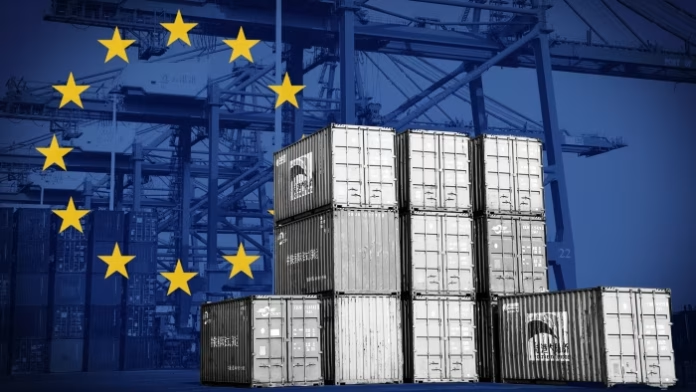The ongoing trade tensions between the United States and China could lead to a shift in global trade dynamics, with Chinese goods potentially being redirected to European markets. Analysts suggest that this development may place additional pressure on European industries already contending with strong competition from China.
While the European Union expressed cautious relief after US President Donald Trump recently paused plans to impose wide-ranging tariffs on various foreign imports, this 90-day suspension notably excludes goods from China. As a result, China may look to offload products previously destined for the US market by redirecting them to other regions, including Europe.
Under current measures, many US imports from EU countries are subject to a 10% tariff. In contrast, Chinese goods entering the United States now face tariffs as high as 145%, significantly raising the cost of these items and making them less accessible to American consumers. This situation could incentivise Chinese exporters to focus more heavily on Europe—even if doing so requires reducing prices to remain competitive.
Some experts warn that such a shift could have adverse effects on European manufacturers. “This could lead to the emergence of new trade routes and more complex global supply chains,” noted Daniela Sabin Hathorn, a senior market analyst at Capital.com. “Businesses may look to re-route Chinese products through alternative markets to sidestep US tariffs.”
French President Emmanuel Macron has also expressed concern, highlighting the risk of unintended consequences from US trade policy. He cautioned that the tariffs could lead to a diversion of Chinese goods to Europe, disrupting certain sectors and placing strain on the European economy. On Friday, he urged the EU to safeguard its markets from such “indirect flows”.
How US tariffs could lead to more Chinese goods in Europe
The increased availability of low-cost Chinese goods could heighten competition for European industries—particularly those already facing financial challenges. Anaïs Voy-Gillis, a geographer specialising in industrial sectors, noted that the European steel industry, which is already under strain, may be further impacted. Other sectors likely to be affected include aluminium and solar panel manufacturing, where Chinese dominance is already well established. The French Ministry for Industry and Energy also identified chemicals and automotive parts as potentially vulnerable.
However, not all analysts predict a severe impact. Aurélien Saussay, a professor at the London School of Economics, suggested the overall effect on Europe might be more nuanced. He pointed out that the trade dispute could give the EU an advantage over China when it comes to exporting goods to the US, offering some level of balance to the situation.
Should Chinese imports increase substantially, Europe could respond with its own trade protections. “This is why there has long been a consensus on avoiding protectionist approaches,” said Saussay. “Retaliatory measures tend to escalate quickly and are difficult to reverse.”
Focus on regulation and competitiveness
European Commission President Ursula von der Leyen has emphasised the need for China to cooperate in managing the potential trade redirection, particularly in sectors where global overcapacity already poses challenges.
Meanwhile, business leaders across Europe are encouraging policymakers to focus on boosting competitiveness. Alexandre Saubot, head of the France Industrie federation, highlighted the importance of supply-side reforms and simplifying regulatory frameworks.
European standards also offer a degree of protection against the influx of lower-quality goods. Anaïs Voy-Gillis pointed out that strict EU regulations help preserve product quality and market stability. Emmanuel Guichard of the French Beauty Industry Federation (FEBEA) added that such standards, particularly in the cosmetics sector, act as a safeguard against market saturation by non-compliant imports.
